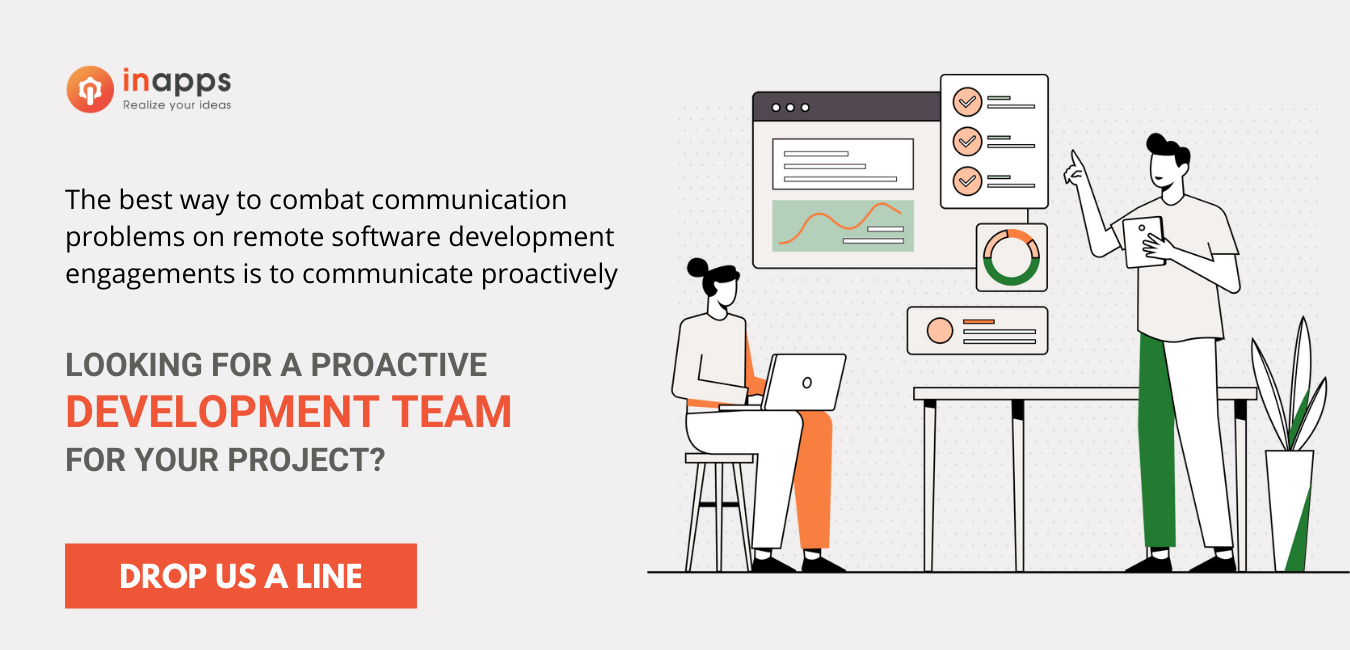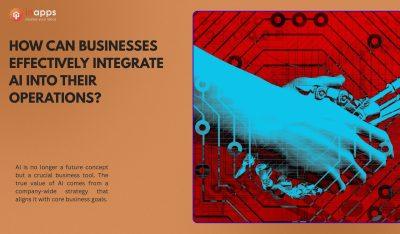- Home
- >
- Offshore News
- >
- HIRING A PROACTIVE COMMUNICATION DEVELOPMENT TEAM WITH INAPPS
You may have come across software development teams describing themselves as “lean” or “agile” with proactive communication. They claim that they employ “scrum methodologies” or “iterative approach.”
This is fantastic news since it implies that the team intends to remain adaptable during the development cycle. It indicates that they are aware that current product plans may change and are willing and prepared to modify the plan in the middle of the process.
However, it is easy to lose sight of good old-fashioned communication skills amid all the methodology and procedure. Hence, in the beginning, hiring a proactive communication team might be precisely what you need.
This article will explore proactive communication, its benefits, and how to build a proactive communication development team.
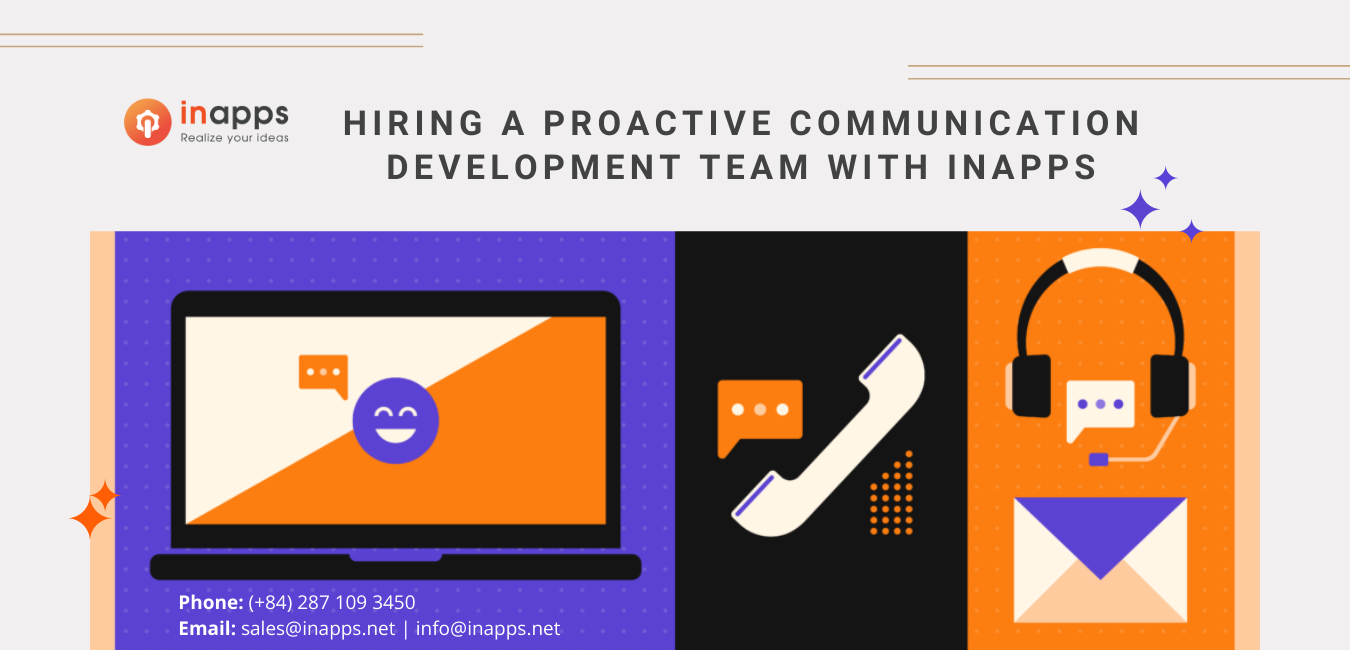
What is Proactive Communication?
Proactive communication aims to anticipate and streamline all interactions to be efficient and personalized for each customer. It is the practice of preventing problems rather than fixing them.
You respond to questions before they are posted and handle complaints before they are made. You engage with your clients to have conversations about the subjects that are essential to you and them. Every conversation with a customer has the potential to deliver benefits for your business.
Proactive communication is result-oriented that can help you stay flexible and alert to trends and changes in customer dynamics and help you deliver on any objectives that you’ve set.
The importance of Proactive Communication in Software Development
Typically, a project gets off to a good start. The team is briefed, and roles and tasks are allocated. However, as the project advances, team members may lose sight of what their colleagues are up to. They are, understandably, focused on their jobs, but it is easy to lose sight of the greater vision without effective communication.
Thanks to email, Skype, and online project management platforms like Redmine and Basecamp, you can effectively collaborate with colleagues in different time zones and continents. However, all of the tools are communication enhancers and do not replace proactive communication. A good team has an adequate flow of communication.
There are many benefits to proactive communication in the software development process:
Keeps the project running smoothly
Communication is so critical in projects that it is an essential component of project success. A communication management strategy — a document that directs project communications – should be included in every project. This strategy should be included in the overall project plan.
In project planning, a lack of proactive communication leaves external and internal stakeholders wondering about the status of project-related issues. It frequently leads to inaccurate assumptions, which can eventually lead to conflict and project failure.
A solid communication plan ensures that all stakeholders have the same information on the project requirements and changes.
Developers working on the project can stay productive if they communicate regularly. They have the required information to continue working rather than frequently pausing to look for missing information.
Read more: How to lead your offshore development team efficiently?

Uncovers client needs and feelings
Proactive communication provides further insight into what is most valuable to the client and concerns they may have.
Many of our clients come to us after having a bad experience with another company or an unsuccessful build elsewhere. Clients must be confident that we will develop their idea and execute it on time and under budget. Clients may be engaged regularly through weekly check-ins, feature-related talks, release notes publishing, and a staging environment where they can observe progress.
The more information we can share with the client, the more involved they will be in the process, the more input everyone will get throughout the project, and the more confident everyone will be in the given solution.
Learn more: How to get out of trouble with a bad team?
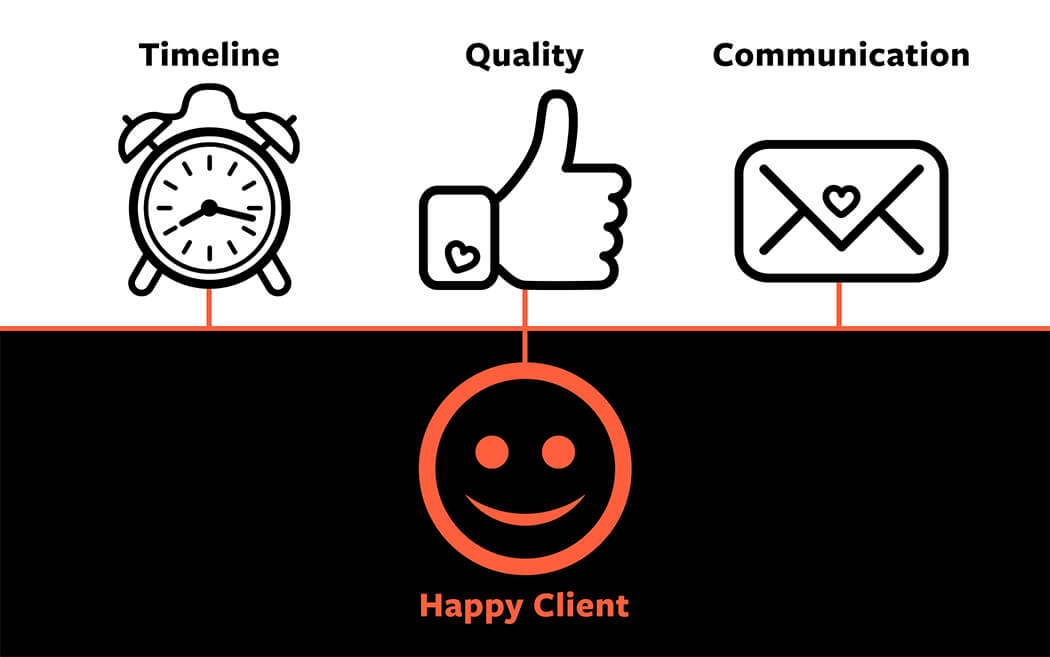
Resolve conflicts
This is one of the reasons why proactive communication is a cornerstone of successful software development. It is critical for project managers to recognize and resolve any disputes that arise throughout the course of a project. Conflicts may arise as a result of project priorities, technical difficulties, project issues, personalities, staffing, procedures, and processes.
Between team members
Some conflicts may arise due to personal incompatibility amongst developers, while others may arise due to disagreements in how team members believe specific tasks should be done.
In any case, conflicts seldom occur in a vacuum. Hence, you can understand the root of the issue through proactive communication to settle it more quickly and prevent similar conflicts in the future.

With the client
According to research, these two main conflict resolution modalities are most used:
Confrontation Method:
When employing confrontation mode, the project manager will immediately tackle a conflict and use a problem-solving method to work through the issues. This method is also known as the problem-solving mode. It is the most popular technique for dispute resolution since it is a win-win situation.
Compromise Method:
In the compromise mode, the project manager resolves disagreements using a give and take strategy. In this case, both sides will bargain and seek solutions that provide some level of pleasure.
How InApps team apply proactive communication

Agile software development
Agile became the de facto norm for software development teams. It reserves a significant role for communication in software development because of its emphasis on close-knit, self-organizing teams that work informally and adapt fast to change.
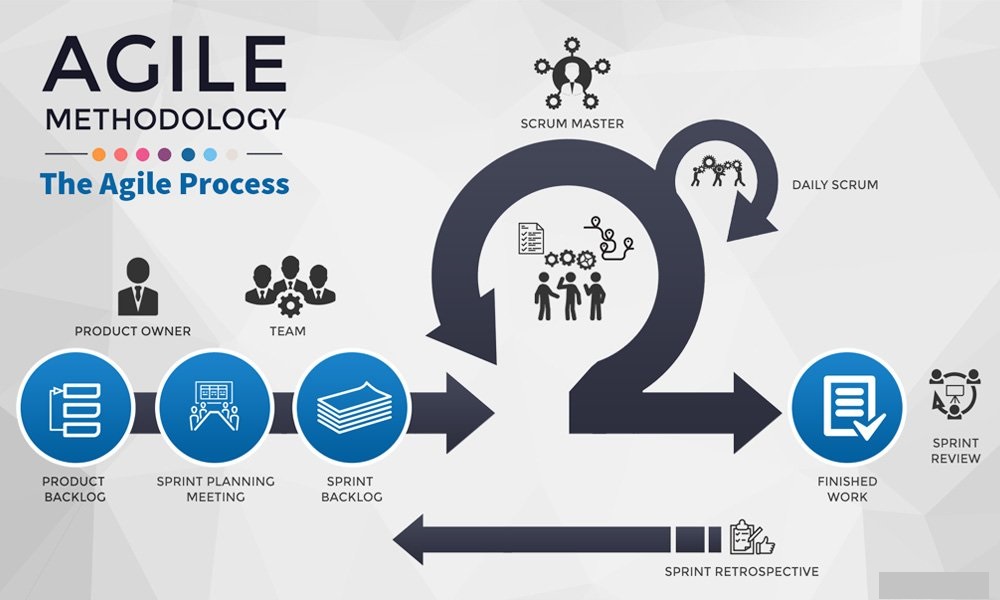
Daily Check-Ins and Scrum meetings
In software development, face-to-face interaction is the most effective type of communication. The main way to do this is through Scrum meetings.
Internal Check-Ins
The software development industry tends to push back against meetings, at least superfluous ones. Meetings may be disruptive to the creative and coding processes since they require workers to take a break from their work to participate. Daily Scrum meetings can be too much and should be addressed through other means, but a weekly internal check-in is essential.
Every Monday, we gather as a group at a predetermined hour. This allows everyone to communicate what they’re working on, identify any blockages or red flags, and understand what’s coming next.
These meetings are brief (approximately 30 minutes), but they serve to get everyone on the same page while keeping the broader picture in mind before meeting with clients. They serve to have the internal team well-prepared for any conversation points we need to make or the client may bring to the table.

Client Check-Ins
Face-to-face meetings are required to keep everyone interested, engaged, and confident in our method. Any team member may start a discussion, push an update to a demonstration environment, or share a video or static deliverable, but having a face to go with a name makes a big difference.
We try to meet with customers face-to-face every week at a set time throughout the project. These meetings are often held early in the week and focus on any recent deliverables as well as the goals or priorities for the next week.
Weekly Updates
We begin the week with client check-ins to establish objectives and priorities, and we conclude with a shared post that summarizes what we were able to achieve. This weekly report is sent out every Friday and includes specifics and progress updates on our goals and priorities, as well as links to any deliverables.
While clients may monitor progress throughout the week, a summary with deliverables conveys our efforts in a single post and instills confidence that progress is being done.

Open Discussions
Not all project communication takes place at the same time each week. There’re also incidental Communications sometimes.
Our team can interact as we move through the development cycle by using platforms like Slack for internal conversation between meetings and in place of daily scrums. When we require the client’s feedback, we use technologies like Basecamp to facilitate communication.
This is also useful if the client needs to bring anything to our notice for discussion. We can communicate, ensure information is distributed, and plan spontaneous conversations to walk through more complex issues.
Here is our process to identify problems and resolve internal conflicts:
Identify and report the problem: Request that each team member explains the problem from their perspective and then set a meeting to discuss it further.
Discussion: The members of the appropriate teams meet with a mediator to discuss their issues. All parties listen to each team member to clear up any miscommunications and reach an agreement. The mediator should also establish the discussion’s eventual purpose.
Finally, in writing: Write down the conclusion of the debate, including the parameters of the compromise, for future reference.
Communication through channels
Agile software development relies on public communication channels to spread ideas among the whole team.
Everyone in the workplace is aware of verbal dialogues and has access to the whiteboard. Everyone at home is working on their laptops in their respective rooms. Developers are not automatically aware of what the rest of their team is doing unless they use a platform like Slack or Zoom.

Slack
While video calling may seem a natural substitute for face-to-face interaction, it suffers from being private. Instead, team members should use communication spaces where the whole team is present, such as Slack channels, even for things they might typically do on a one-to-one basis.
We have a mix of remote, sometimes remote, and in-office employees, and having a tool that allows us to communicate and collaborate with others quickly enables us to function as a team. Every project has an internal communication channel that we utilize when we can’t meet in person. All internal conversations, meeting notes links, and other materials are posted here. We also do weekly check-ins through Slack to offer clients an update.
Basecamp
Email is a wonderful communication tool, just not for project-related communications. At InApps, we endeavor to give our clients a quick response time, which is impossible when emails are sent to someone who is out of the office or unavailable. When conversations are emailed instead than shared through technologies like Basecamp, where discussions are threaded, easily searchable, and open to the whole team, things like feature requests and issues tend to go through the gaps, and dialogues get hidden.
One-On-One Chats
One-on-one chats are particularly tough. They usually occur outside of the team, there are few notes, and they stifle excellent project-related communication. While they are unavoidable no matter how hard you try, at InApps, we quickly note the talking points and distribute them in digital form with the team (client included).
Grow your business with InApps offshore development team
Let’s create the next big thing together!
[sociallocker id=”2721″]
List of Keywords users find our article on Google:
| what is proactive communication |
| proactive communication |
| communication strategy for an offshore team |
| mobile development team communication |
| scrum offshore development |
| proactive communications applications |
| proactive communication skills |
| proactive communication in the workplace |
| what is communiaction |
| what is proactive |
| communication proactive |
| proactive communication vs communication |
| importance of proactive communication |
[/sociallocker]
Let’s create the next big thing together!
Coming together is a beginning. Keeping together is progress. Working together is success.




